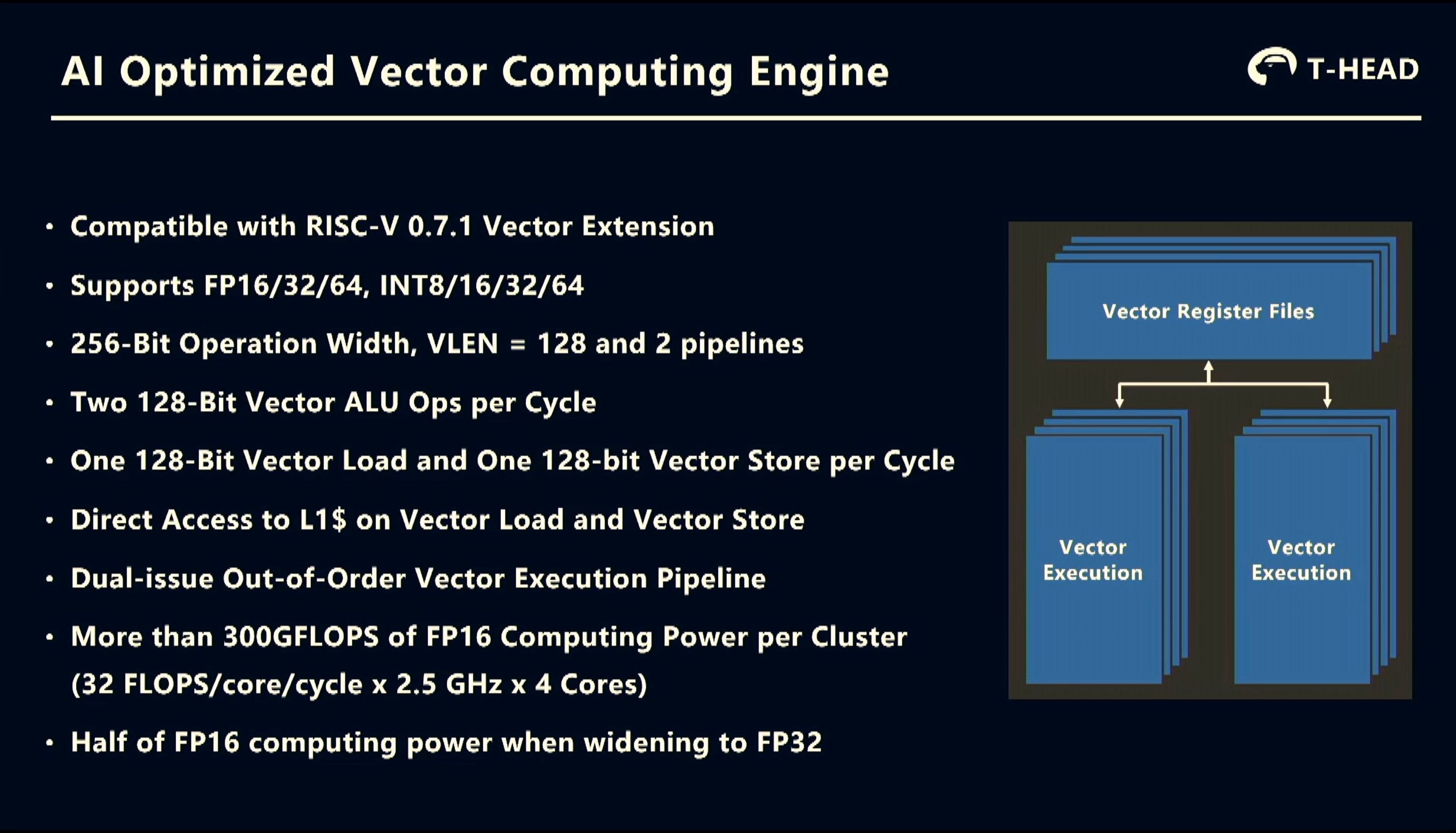Alibaba’s new 16-core CPU will challenge Intel Xeon in datacenters
Alibaba details its 16-Core Xuantie 910 CPU

Alibaba has unveiled its RISC-V RV64GCV core that will be used for its Xuantie 910 processor aimed at cloud and edge servers.
The e-commerce giant has developed one of the industry’s first 64-bit RISC-V core and system-on-chip (SoC) designed for high-performance applications.
The Alibaba Xuantie 910 SoC packs up to 16 RV64GCV cores organized in four quad-core clusters that run at 2.0GHz ~ 2.50GHz as well as four AI-optimized vector computing engines (one per cluster). The processor will be used primarily by Alibaba itself to power its AI and edge servers, but could also be used for ADAS and industrial applications.
- Best small business servers
- Best dedicated server hosting providers
- We highlighted the best cloud storage service
High-performance RISC-V
The RV64GCV core features a 12-stage out-of-order pipeline that can fetch and issue eight instructions per cycle and decode three instructions per cycle. Each core is equipped with up to 128KB L1 cache (32/64KB for instructions, 32/64KB for data) and all cores share up to 8MB L2 cache.
The core supports Alibaba’s proprietary RISC-V Turbo extensions that enable faster bit operations, memory access, multi-core synchronization, memory management, and cache improvements. The company claims that, depending on the workload, its extensions provide up to 20% performance improvements.

Alibaba’s RV64GCV is one of the first commercial cores to fully support the RISC-V 0.7.1 vector extensions and FP16/32/64 and INT8/16/32/64 formats.
The vector engine features two 128-bit ALUs that provide up to 300 FP16 or up to 150 FP32 GFLOPS per cluster at 2.50GHz. Therefore, the whole Xuantie 910 chip can offer up to 1200 FP16 or 600 FP32 GFLOPS of compute horsepower.
Sign up to the TechRadar Pro newsletter to get all the top news, opinion, features and guidance your business needs to succeed!

The developer says that, based on its experiments and emulations, its RV64GCV core offers performance comparable to that of Arm's Cortex-A73, launched in 2016 and used for mobile SoCs as HiSilicon’s Kirin 960/970, Qualcomm’s Snapdragon 835, and MediaTek’s Helio X30.
The RISC-V is an open-standard instruction set architecture that has been used primarily for microcontrollers and processors for basic applications. Meanwhile, a number of companies, including Alibaba, are working on high-performance RISC-V cores for demanding applications.
Alibaba plans to receive the final XuanTie 910 chip implemented using TSMC’s 12nm FinFET technology sometimes in September and if this SoC meets all requirements, expect mass production to start shortly.
In addition, Alibaba is working on smaller processors based on its RISC-V cores.
Source: AnandTech
Anton Shilov is the News Editor at AnandTech, Inc. For more than four years, he has been writing for magazines and websites such as AnandTech, TechRadar, Tom's Guide, Kit Guru, EE Times, Tech & Learning, EE Times Asia, Design & Reuse.